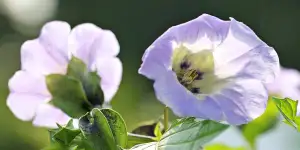Say Goodbye to Fruit Flies with This Easy DIY Fruit Fly Trap: A Step-by-Step Guide for a Fly-Free Home!

Fruit flies are a common nuisance in many homes, especially during the warmer months. These tiny insects are attracted to ripe or decaying fruits and vegetables, as well as sugary substances like juice and soda. Fruit flies can quickly multiply, causing frustration and annoyance for homeowners. They are not only bothersome but can also contaminate food with bacteria and other pathogens they carry on their bodies. To tackle this problem, it is essential to take proactive measures such as using a fruit fly trap to effectively eliminate these pesky insects from your living space.
Importance of using a fruit fly trap
The importance of using a fruit fly trap cannot be overstated. Fruit flies are not only annoying, but they can also contaminate our food and spread diseases. These tiny insects are attracted to ripe or decaying fruits and vegetables, as well as sugary substances like juice or soda. Without proper control measures, fruit fly populations can quickly multiply, causing a significant infestation in our homes.
Using a fruit fly trap is crucial because it helps to break the reproductive cycle of these pests. By luring them into the trap, we can effectively reduce their numbers and prevent further breeding. This not only eliminates the annoyance of having fruit flies buzzing around our kitchen but also ensures that our food remains safe and hygienic.
Moreover, using a DIY fruit fly trap is an eco-friendly alternative to chemical sprays or pesticides. It allows us to tackle the problem naturally without introducing harmful toxins into our living spaces. This is particularly important for households with children or pets, as it minimizes their exposure to potentially harmful chemicals.
In conclusion, using a fruit fly trap is essential for maintaining a clean and healthy home environment. It helps to control fruit fly populations, prevents contamination of our food, and offers an eco-friendly solution to this pesky problem. With the right materials and techniques, we can effectively say goodbye to those bothersome fruit flies once and for all.
Materials required for a DIY fruit fly trap
Materials required for a DIY fruit fly trap are easily available and inexpensive. Here's what you'll need:
1. A small glass or plastic container: Choose a container with a narrow opening to prevent the flies from escaping once they are trapped.
2. Apple cider vinegar: Fruit flies are attracted to the sweet smell of vinegar, making it an effective bait for the trap.
3. Dish soap: Adding a few drops of dish soap to the vinegar will break the surface tension and prevent the flies from escaping.
4. Plastic wrap or a lid: Covering the container with plastic wrap or a lid will create an entrance for the fruit flies but make it difficult for them to escape.
5. Toothpick or fork: You'll need something to poke holes in the plastic wrap, creating small openings for the fruit flies to enter.
These simple materials are all you need to create an effective DIY fruit fly trap that can help eliminate these pesky insects from your home.
Step-by-step guide to making a fruit fly trap
a. Choosing a suitable container: Select a small container with a narrow opening, such as a mason jar or a glass bottle. Make sure it is clean and has no cracks or holes.
b. Creating a fruit fly attractant: Mix equal parts of apple cider vinegar and dish soap in the container. The vinegar attracts the fruit flies, while the dish soap breaks the surface tension, causing them to drown.
c. Assembling the trap: Cover the container with plastic wrap and secure it tightly with a rubber band. Then, poke several small holes in the plastic wrap using a toothpick or fork. These holes will allow fruit flies to enter but make it difficult for them to escape.
d. Placement and maintenance tips: Place the trap near areas where you've noticed fruit flies, such as your kitchen or dining area. Empty and clean the trap regularly to prevent buildup of dead flies and attract more pests.
By following these simple steps, you can create an effective DIY fruit fly trap that will help eliminate these pesky insects from your home.
Choosing a suitable container
When it comes to choosing a suitable container for your DIY fruit fly trap, there are a few key factors to consider. First and foremost, you'll want a container with a narrow opening or small holes that will allow fruit flies to enter but make it difficult for them to escape. A mason jar or a small glass bottle with a tight-fitting lid can work well for this purpose.
Additionally, the size of the container should be proportional to the area you're trying to cover. If you have multiple areas in your home where fruit flies are a problem, consider making several traps and placing them strategically around the affected areas.
Remember that transparency is important as it allows you to monitor the number of trapped fruit flies. Being able to see how effective your trap is will help you gauge the severity of the infestation and track your progress in eliminating these pesky insects.
By carefully considering these factors, you can choose a suitable container that will maximize the effectiveness of your DIY fruit fly trap and help rid your home of these annoying pests.
Creating a fruit fly attractant
Creating a fruit fly attractant is an essential step in making an effective DIY fruit fly trap. Fruit flies are attracted to the scent of ripe or decaying fruits, so we need to replicate that odor to lure them into the trap. One simple and effective attractant can be made by mixing apple cider vinegar with a few drops of dish soap. The vinegar's sweet aroma will entice the fruit flies, while the dish soap will break the surface tension of the liquid, causing the flies to sink and drown when they come in contact with it. This combination has proven to be highly successful in attracting and trapping fruit flies.
Assembling the trap
Assembling the trap is a simple process that requires just a few steps. Once you have chosen a suitable container and created the fruit fly attractant, follow these instructions to complete your DIY fruit fly trap:
1. Take the container and carefully poke several small holes in the lid using a sharp object such as a nail or a pin. These holes should be large enough for fruit flies to enter but not too big that they can easily escape.
2. Pour the fruit fly attractant into the container, filling it about halfway. The scent of this mixture will lure the fruit flies towards the trap.
3. Place the lid securely onto the container, ensuring that it is tightly sealed. This will prevent any fruit flies from escaping once they enter.
4. Optional: You can also cover the top of the container with plastic wrap and secure it with a rubber band, creating a makeshift funnel for easier entry of fruit flies.
Once you have assembled your trap, it's time to place it in strategic locations around your home where fruit flies are commonly found. Keep in mind that these pesky insects are attracted to ripe fruits, vegetables, and other organic matter, so focus on areas like kitchens, dining rooms, and garbage disposal areas.
Remember to regularly check and empty your trap to prevent an overflow of trapped fruit flies. Rinse out the container before refilling it with fresh attractant to maintain its effectiveness.
By following these simple steps, you can effectively assemble your own DIY fruit fly trap and say goodbye to those annoying pests buzzing around your home!
Placement and maintenance tips
Once you have assembled your DIY fruit fly trap, it is important to place it in the right location for optimal effectiveness. Fruit flies are attracted to areas where ripe fruits and vegetables are present, so make sure to position the trap near your produce storage area or kitchen countertop.
To maximize the trap's efficiency, keep it away from direct sunlight as excessive heat can deter fruit flies. Instead, choose a spot with moderate temperature and good airflow. Additionally, ensure that the trap is placed away from food preparation surfaces to avoid any contamination.
Regular maintenance is crucial for keeping your fruit fly trap effective. Check the trap daily and remove any captured fruit flies. Emptying the trap regularly prevents overcrowding and allows room for more flies to be caught. Clean the container thoroughly with warm soapy water before refilling it with fresh attractant.
Remember to replenish the attractant every few days or when its scent starts to fade. This will ensure that your trap remains enticing to fruit flies and continues to capture them effectively.
By following these placement and maintenance tips, you can say goodbye to fruit flies and enjoy a fly-free home!
Additional tips for preventing fruit fly infestations
1. Store fruits and vegetables properly: Keep ripe or overripe produce in the refrigerator to prevent attracting fruit flies. If you prefer to keep them at room temperature, make sure to consume them before they become overly ripe.
2. Clean up spills and crumbs promptly: Fruit flies are attracted to any food residue, so it's important to clean up spills and crumbs immediately. This includes wiping down countertops, cleaning out garbage cans regularly, and not leaving dirty dishes in the sink.
3. Seal trash cans tightly: Make sure your trash cans have tight-fitting lids to prevent fruit flies from accessing food scraps. Empty the trash regularly to avoid any buildup of organic matter that could attract these pests.
4. Keep drains clean: Fruit flies can breed in drains where there is organic matter buildup. Regularly clean your kitchen drains using a mixture of baking soda, vinegar, and boiling water to eliminate any potential breeding grounds.
5. Cover ripening fruits: If you have fruits ripening on the counter, cover them with a fine mesh or plastic wrap to prevent fruit flies from landing on them.
By following these additional tips along with using a DIY fruit fly trap, you can significantly reduce the chances of fruit fly infestations in your home and enjoy a fly-free environment!
In conclusion, DIY fruit fly traps are an effective and affordable solution to tackle the pesky fruit fly problem in your home. By using simple materials and following the step-by-step instructions, you can easily make a trap that will help eliminate these annoying insects.
The importance of using a fruit fly trap cannot be emphasized enough. Fruit flies not only contaminate our food but also lay eggs, leading to an infestation. By trapping them, we can prevent their reproduction and keep our homes clean and hygienic.
Remember to place the trap in areas where fruit flies are commonly found, such as near garbage bins or fruit bowls. This will maximize its effectiveness in capturing these tiny pests.
While DIY traps are effective, it's also essential to take preventive measures. Natural remedies like keeping fruits covered, cleaning up spills promptly, and regularly disposing of overripe fruits can help prevent infestations from occurring in the first place.
Maintenance of the trap is crucial for its continued effectiveness. Clean out the trap regularly by emptying it and washing it with soap and water. Dispose of any captured fruit flies properly to avoid re-infestation.
In conclusion, DIY fruit fly traps offer a practical solution for dealing with fruit fly problems at home. By following this step-by-step guide and implementing natural preventive measures, you can say goodbye to those pesky fruit flies once and for all!
Published: 22. 02. 2024
Category: Home



